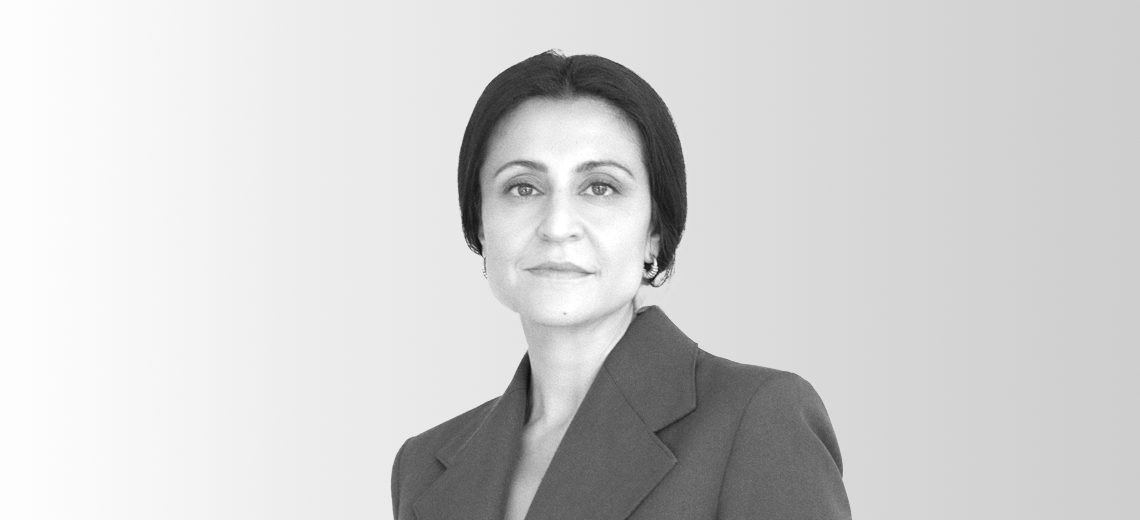This is an episode of the Glossy Fashion Podcast, which features candid conversations about how today’s trends are shaping the future of the fashion industry. More from the series →
Subscribe: Apple Podcasts • Spotify
Luxury resale company The RealReal, which went public in June 2019, is nearing profitability.
“Next year, we will be profitable on a full-year basis,” Rati Sahi Levesque, the company’s president and chief operating officer, said on the latest episode of the Glossy Podcast.
And big changes were made to ensure the goal is met: “Last year was really a reset year. [After] looking at our product mix, our operating expenses and our real estate, we rejiggered the business in a lot of ways.”
That included making some layoffs, closing some stores and restricting the sourcing of inventory to individual consignors — no more buying products from brands. The RealReal’s total revenue for 2022 landed at $603 million, an increase of 29% year-over-year.
Now, Sahi Levesque said the company is focused on “discipline and execution,” when it comes to its 2024 plans. She also discussed the company’s strategy for winning sellers, its celeb-fueled launch 12 years ago and its plans to open up to 50 stores within the next 10 years.
Additional highlights from the conversation, below, have been lightly edited for clarity.
Getting the company off the ground
“When we first started 12 years ago, there was a stigma around resale. … And we found that our buyers didn’t want to tell their friends [about us]. That was for a couple of reasons: They didn’t want their size to be gone; they were worried that there was a limited inventory. And also, there was that stigma of wearing someone’s used shoes or dress, and [people wondered] whether it would smell like resale. … So it was really important for us, when we opened our stores, to kind of take that away. … We wanted to make it feel like a luxury experience and special, and that you scored something that you wouldn’t have gotten otherwise. … When we first started, everything sold out within seconds. We had a few hundred items on the site. And that’s when [founder and CEO] Julie [Wainwright] and I looked at each other and were like, ‘I think this is gonna work.’ And also, ‘We need more product.’ So, we looked for new product. Paula Abdul was one of our first sellers, and she was so awesome. And we were so excited that she wanted to consign with us. And that’s kind of how we got started. I drove around to my friends’ houses, to Julie’s friends’ houses — and then we had Paula Abdul. And then, the rest was kind of history. People started sending us Birkins in the mail that weren’t even insured. It was crazy.”
Responding to pandemic challenges
“We were growing really fast a few years ago, and then Covid hit. And we had a hard time, to be honest with you. We were having scaling issues. Things were tough. … We’ve actually slowed down our growth to make sure that our growth is profitable growth. For example, it’s not just any kind of product that we’re taking — we’re taking the right product. We always say we’re going back to our core, because that’s how we started: [selling] certain brands at certain price points. And we’ve invested a lot in the seller experience. For example, we’ve invested in ‘concierge pods.’ Now, all of our sellers have a dedicated person that they can call if they’re having any kind of issue with their consignment — maybe they’re wanting to understand pricing or they’re wanting to understand the attribution. Making the experience even better for them has been really important to us. And when we launched [the pods] back in October, our net promoter score for our sellers went up 26 points. … Sellers are the heartbeat of our company.“
The importance of stores
“We had 19 locations last year, and we brought that down to 13. The stores are great; we are very optimistic about the stores. Thirty percent of our new sellers come from stores. These stores bring in so much supply, which, because we’re a supply-constrained business, is really important. … But we’re getting smarter about what markets to be in. We’re using data to understand where our sellers are and which zip codes we need to be in. We did close a handful of stores earlier this year and last year, but it wasn’t because they weren’t working. Some of these markets just didn’t do well post-Covid. San Francisco was one of them, Downtown Chicago was another one. … The rent was honestly too high for the traffic that was coming through. So we had to make decisions like that. …. We’re just kind of recalibrating to make sure we’re on this track for profitable growth. …. And we’re going to look at our store fleet every year to make sure that we’re opening and closing stores in the right spots, and optimizing in that way. But we’re super bullish on stores. … We’re not going to be the brand that has 500 stores; 50 stores is probably the most we’ll have, and that will be over the next 5-10 years. We talk about opening 1-2 stores a year.”




